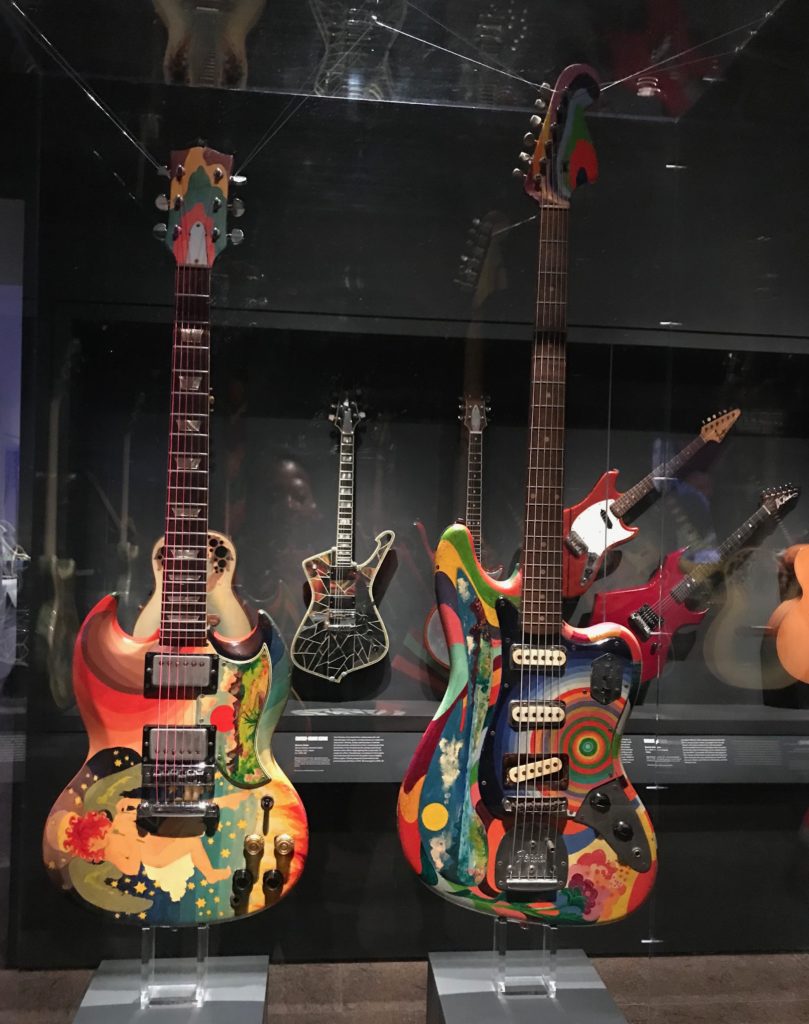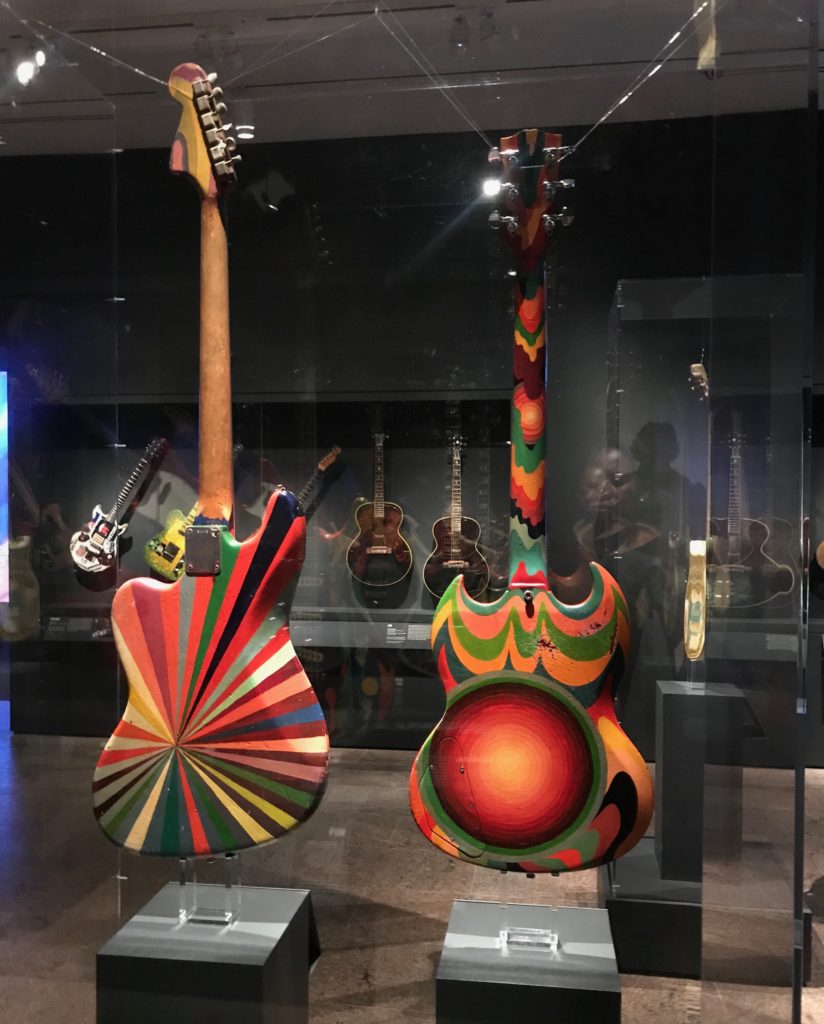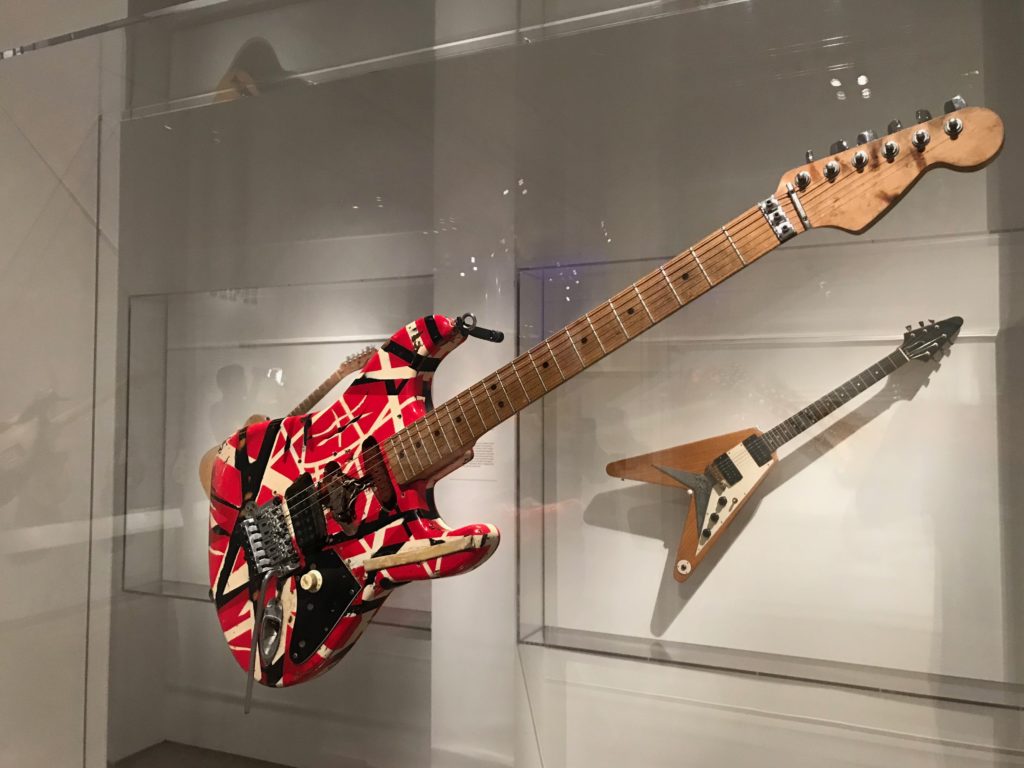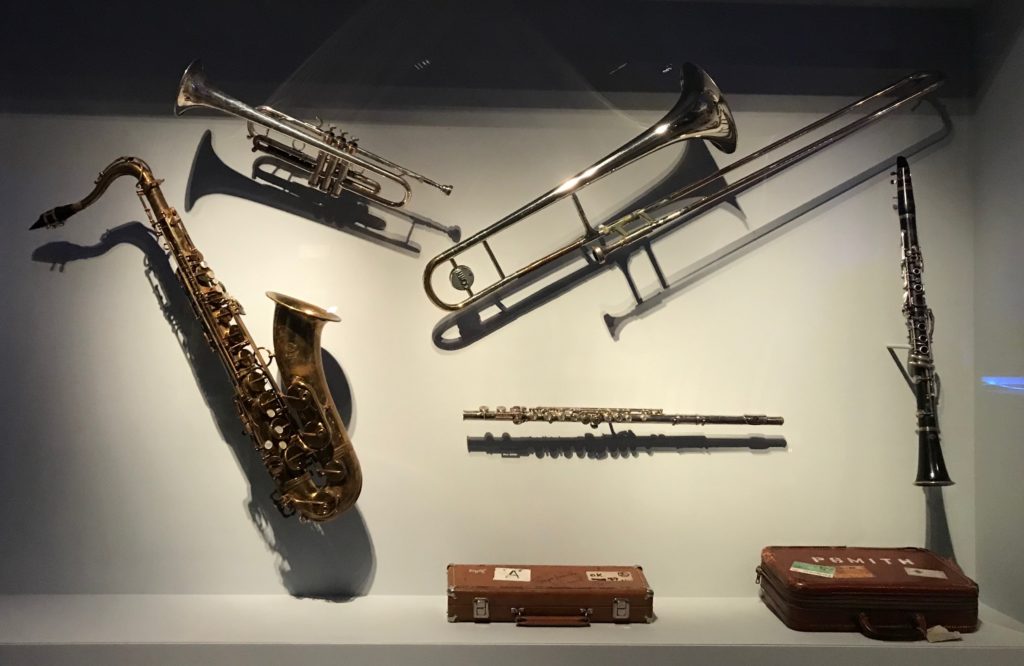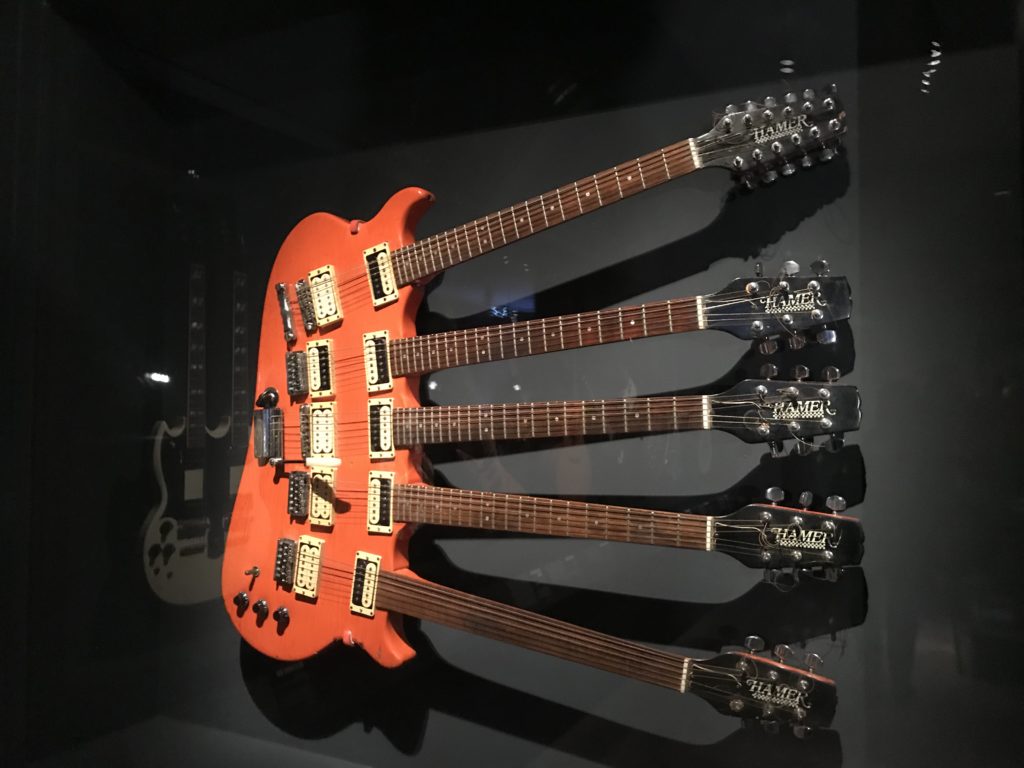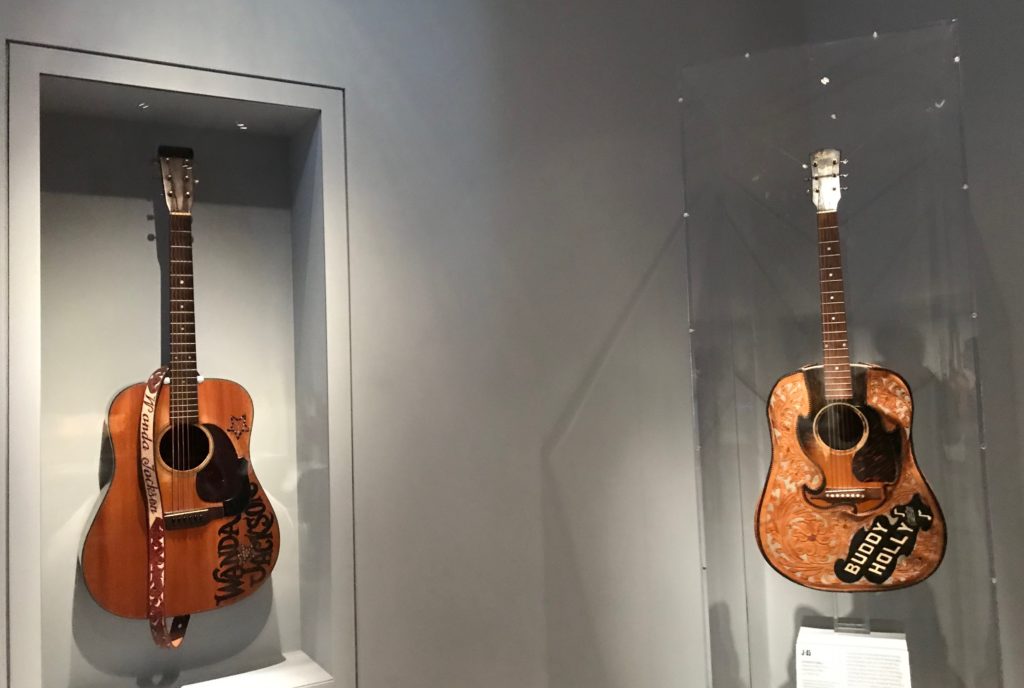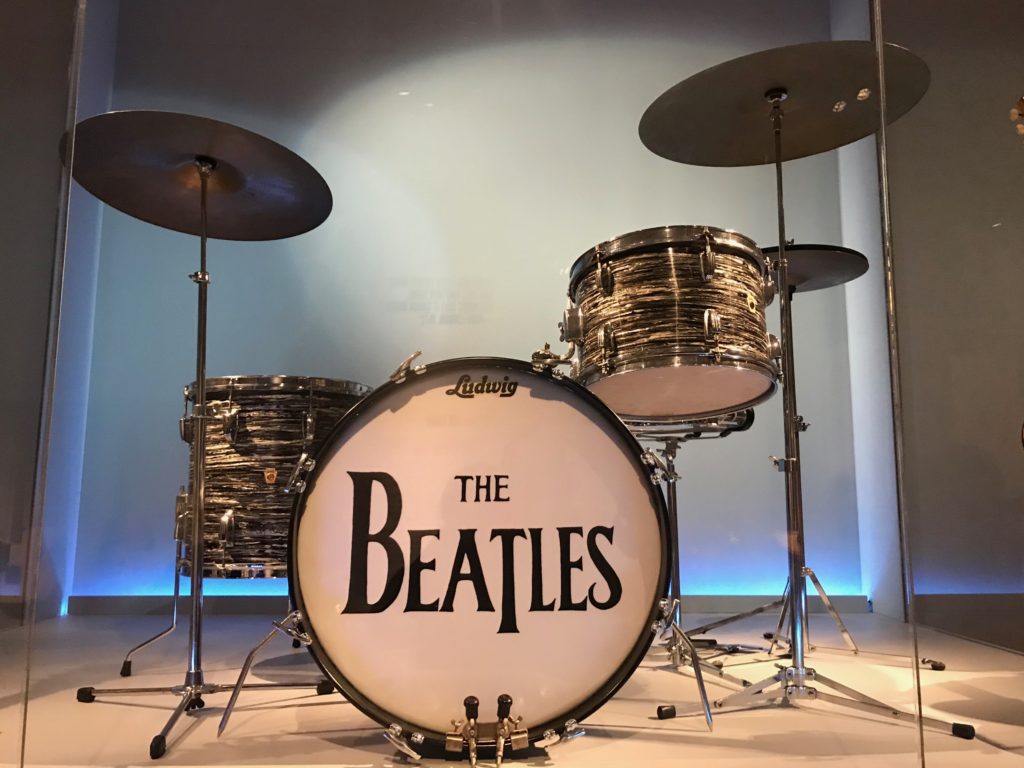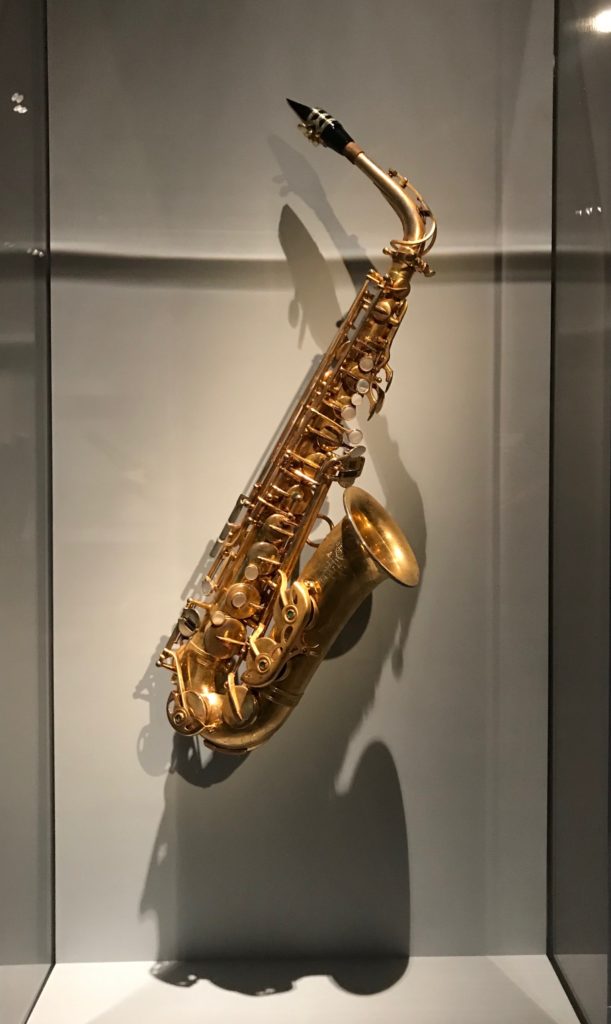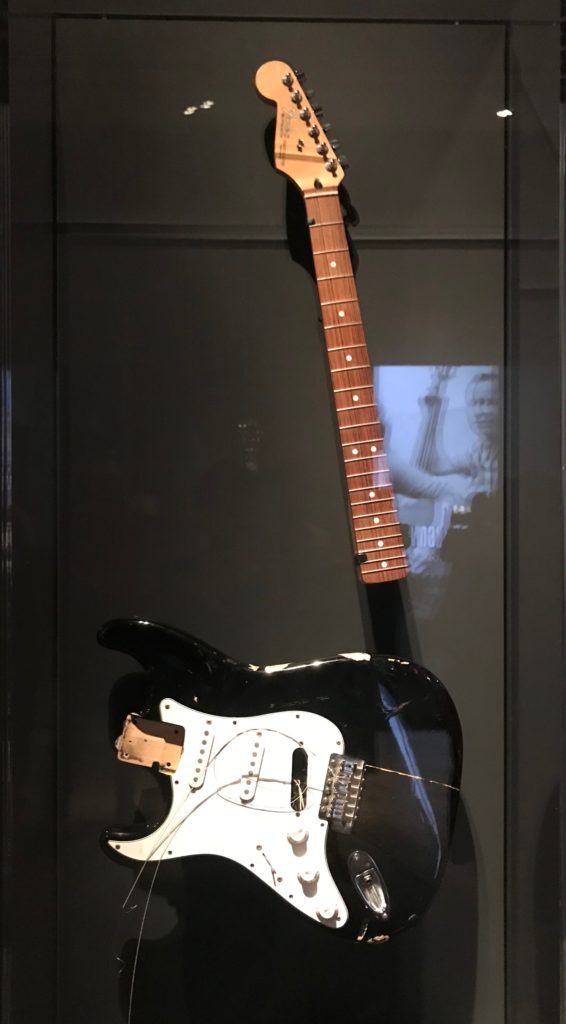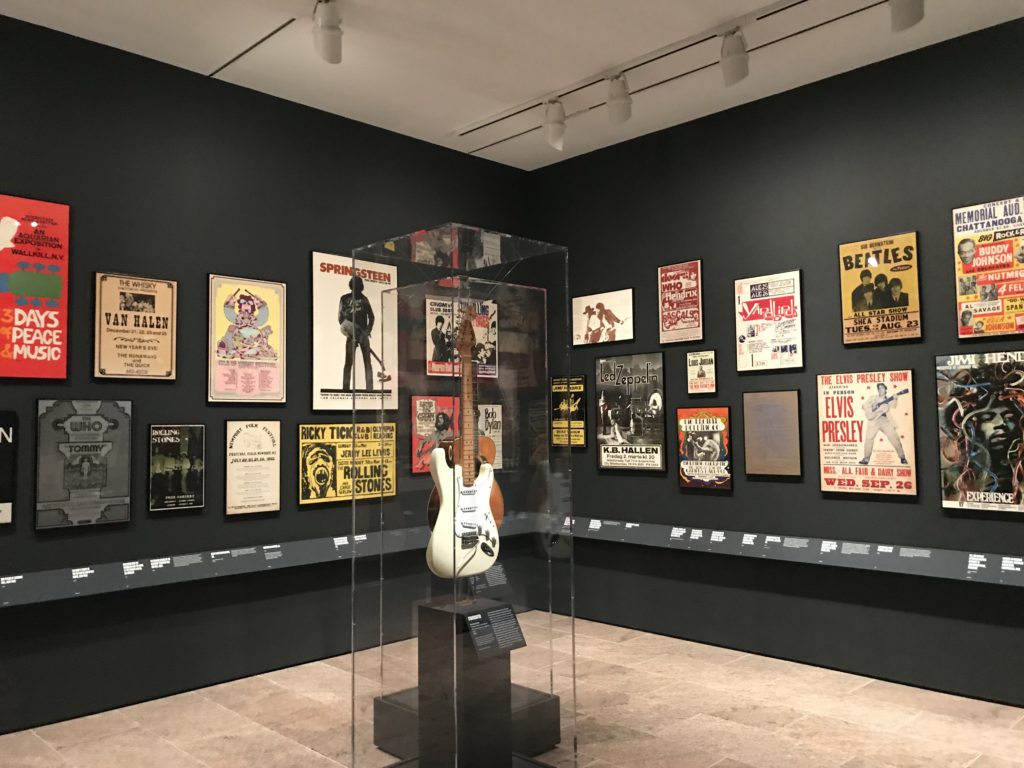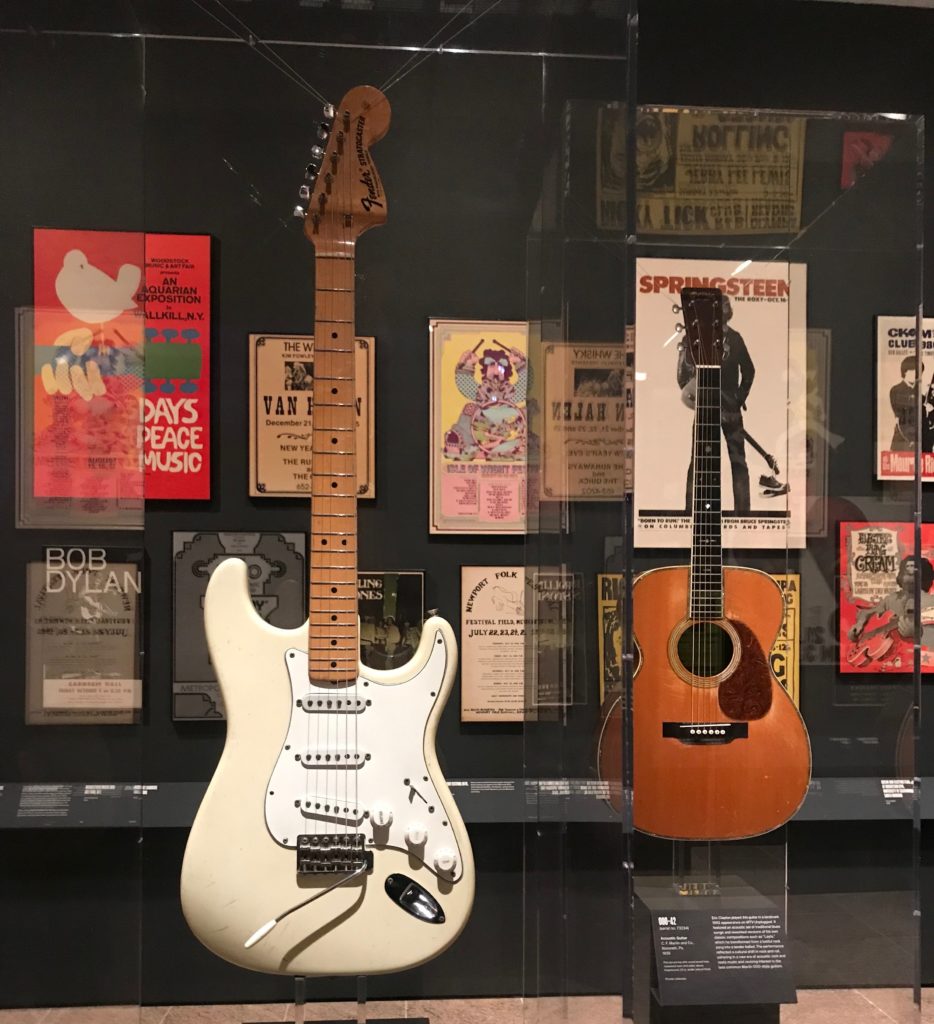ART REVIEW
Kemi Osukoya
THE AFRICA BAZAAR magazine
April 2019
TUCKED IN A GALLERY BETWEEN THE BARELY CLOTHED, and naked classical Greek and Roman human-sized statue collection of philosophers, poets, theologians and Emperors on display at the Metropolitan Museum of Art in New York City are another kind of statues much more powerful and more capable of giving voices and sounds to feelings and ideas that words, even Homer’s, simply cannot do justice to. These statues, iconic in their own rights and era have the power to take the audience beyond an odyssey into Nirvana that even Homer’s Odysseus would be envious of if he were alive today. The skillfully crafted engineered-musical instruments like guitars, trumpets, saxophone, band-sets and piano are some of the best inventions ever to come out of the enlightenment of mankind to bring mellifluous sounds and joy to life in form of music.
Andy Warhol famously once said in the future everyone will get their fifteen minutes of fame. Well, in these days and age of social media, celebrities and social media influencers, one can pretty much say that statement has came to past. But there’s another kind of fame that is still very much unattainable, even to the most celebrated movie-stars, politicians, Wall Street executives and many of us so called regular folks and that’s to live a childhood dream of being a rock star— a rock and roll star.
We all know the phrase— we all want what we cannot have. Well, let’s just say we can all agree that when it comes to being a rock and roll star, this phrase is unequivocal. The term-rock star, which origin is often traced to rock and roll iconic music bands like the Rolling Stones, has been adapted and used colloquially in our societies, especially by Wall Street executives who use the words to praise each other’s financial accomplishments and achievements. The real rock musicians on the other hands, if you ask them, will very much like to have the wealth that those Wall Street executives have. Hence the saying, we all want what we cannot have—which has yet to deter many of us from trying. Even if that best is to imagine or pretend to be a rock star in the privacy of our home.
Being a rock star is obviously a common ambition shared by many people. At one time or the other, we all think about it, imagine it and pretend to be it in the privacy of our homes, cars or at Karaoke bars as we sing along to our favorite song or rock music. Some of us are even bold enough to take creativity from actor Tom Cruise’s character dancing scene in “Risky Business” or actress Cameron Diaz‘s Natalie Cook character dancing scene in the “Charlie’s Angels” movie, to act out our imagination— strutting on an imaginary stage wearing an outlandish attire, disheveled-hairstyle, heavily make-up face, standing in front of the audience, holding a mike, legs slightly apart, body tilting slightly backward or sideways as you sings, finger playing air guitar or your favorite musical instrument.
There is something transcendent about that whole imaginary experience— it is exhilarating, exquisite, yet uniquely defiant pretending to be a replica of Mick Jagger, Prince, Steven Tyler, Rod Stewart, U2 or Lady Gaga or any of the old or new rock musicians,—that brings indescribable feelings of joy and happiness that transcend the physical, which is what you will feel when you walk into the gallery to see the Play it Loud: Instruments of Rock & Roll exhibit currently on view at the MET’s Fifth Avenue location from April 8 through September. The exhibition celebrates the extraordinary contributions that guitars and other musical instruments in this collection have made to our societies, and the world at large. All of these instruments at one time or the other have collectively given us melodious music, joy and happiness.
Put in the right hands, the stringing vibrations of a guitar, the timbres of a trumpet, the patters of a drum or the bellow of a piano—vibration sounds coming from these instruments, especially the guitar—which is akin to West African talking drums for its toner language, have the power to supernaturally transport people to verisimilitude as well as magical places just like the movies’ characters of Alice was to Wonderland and Charlie to the Chocolate factory. Or as Tina Weymouth said in her remarks during the press preview, reading exempts from philosopher, theologist and civil right leader Howard Thurman’s remarks at Spellman College— to “the sound of the genuine.”
“There is something in everyone of you that waits, listens for the sound of the genuine in yourself and if you cannot hear it, you will never find what it is that you’re searching and if you hear it and do not follow it, better that you had never been born. You are the only one that has ever lived. You, your idiom is the idiom too of its kind in all existence and if you cannot hear the sound of the genuine in you, you will all your life spend your day on the end of strings that somebody else pulls. You maybe famous, you maybe whatever the ideals are which are part of this generation, but you know you don’t have the foggiest of notion of who you are, where you are going and what you want until you cultivate the discipline to listen to the sound of genuine of yourself… Now, if I hear the sound of the genuine in me and if you hear the sound in you, it is possible for me to go down in me and come up in you so that when I look at myself through your eyes after I made that pilgrimage, I see in me what you see in me and the wall that separates and divide would disappear and we would become one because the sound of the genuine makes the same music.”
ADVERTISEMENT
Using a somewhat visual narrative stratagem to highlight the instruments, Jayson Dobney, Curator in charge of the Department of Musical instruments at the MET has put together a show, comprising of esteemed musical instruments from iconic and Rock & Roll Hall of Fame musicians—both men and women—from Jimi Hendrix, Bob Dylan, the Beatles, Elvis Presley, Jimmy Page of the Led Zeppelin, Stevie Miller, Don Felder of the Eagles band, Joni Mitchell, Eric Clapton, Jerry Garcia to Tina Weymouth, Prince and Lady Gaga and many more.
These musical instruments have inspired these musicians to become who they are, or serve as their creative muse: from Bob Dylan’s Sunburst Stratocaster guitar that he debuted at the Newport Folk Festival, Jimi Hendrix’s Fender Stratocaster electric guitar that he played at the 1969 Woodstock Music Festival, Rick Nielsen’s original custom-made five-neck guitar, Keith Richards’ Micawber and Les Paul custom electric guitars, Kurt Cobain’s left-handed Stratocaster electric guitar, Louis Jordan’s alto saxophone, to Prince’s iconic Love Symbol guitar and Lady Gaga’s unconventional, futuristic Artpop piano are some of the musical instruments that will mesmerize you as you make your way through the collection in the gallery
Among the instruments you will see in the show is Stevie Miller’s Les Paul TV Special electric guitar that was given to him when he was 23 years old by another great guitarist named Leslie West.
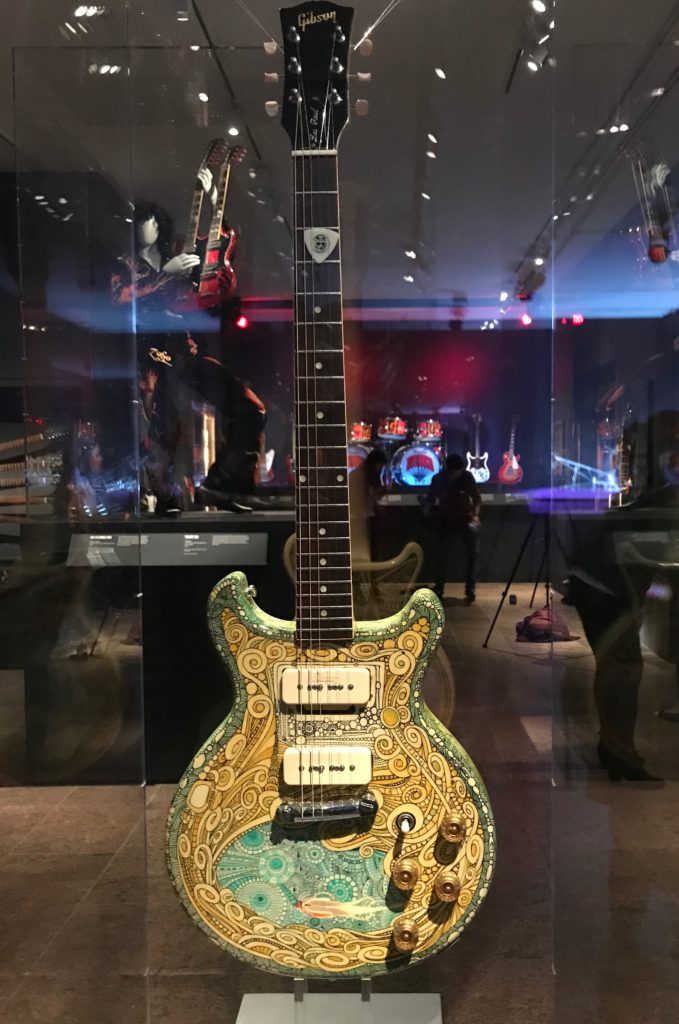
“When I was about 23 yrs old I was here in NY and there was a band called Vagrants and Mountain and a great guitarist named Leslie West, I was pestering West about how do you do this, how do you get that turned on, show me this and he got so tired of me and one day picked up his guitar and said, here you can have this and he gave it to me and kicked me out of the dressing room,” says Miller reminiscing about the experience of how he came to possess one of the most iconic beauty musical instruments. That guitar is the 1961 Les Paul TV Special electric guitar and the TV model means the guitar was painted dull-yellow because it looked better in the black and white television of that era. Miller had the guitar repainted in psychedelic design, and is one of his favorites from his collection of 400 plus guitars. Miller promises to donate the guitar to the museum’s musical instruments department in the near future.
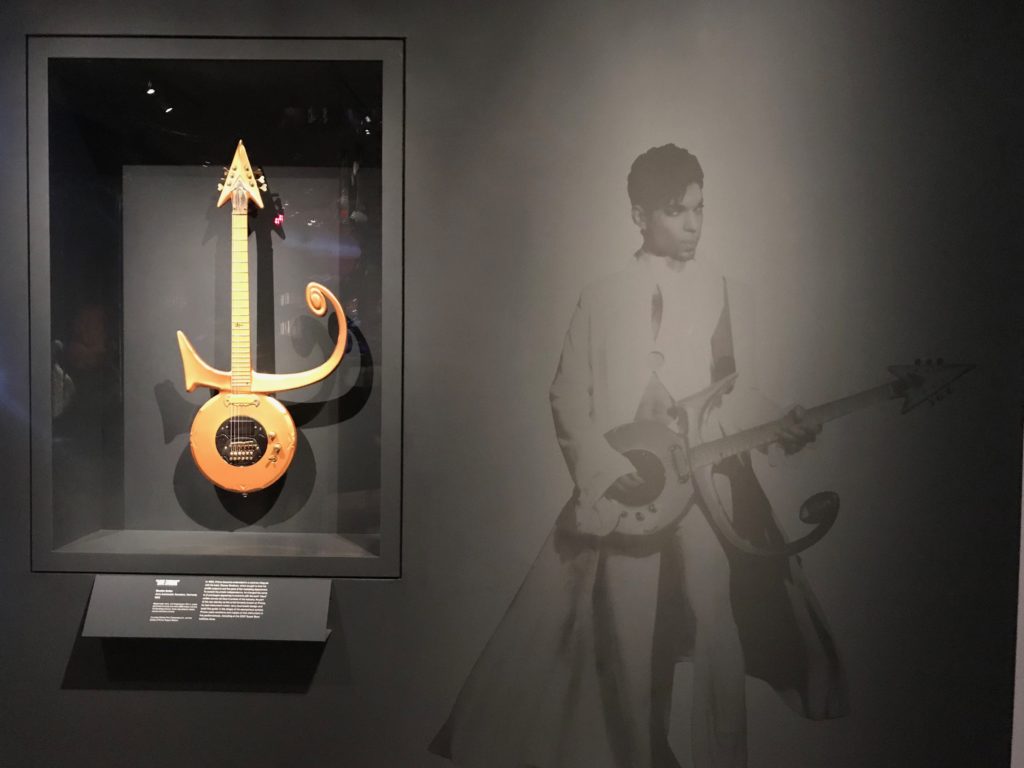
Also on view, along with a silhouette of the artist on the wall next to it, is the Love Symbol guitar, an intricately carved sculptural guitar that was designed and played by Prince, the late African American iconic musician and actor who died in 2016. This guitar, which Prince used as a symbol to protest and assert his artistic independence following his 1993 contract dispute with Warner Brothers music specifically will resonate with many viewers, calling to minds the artist’s flamboyant, groundbreaking music, and his unorthodox music videos in which he sometimes dressed anomaly.
A broken piece from one of Jimi Hendrix’s iconic guitars is also on display in the collection.
Stripped of their stereotypical characters as iconic Rock & Roll musical instruments, these instruments symbolize beauty, strength, talent, and innovation. The show is not just dazzling, and ostentatious, it is empirically illuminating— bringing out the feelings of awe, recognition, inclusiveness—and a sort of coded mindful dialogue that calls to viewers’ minds as you walk through the gallery the importance of music and musicians to our societies.
At a time when music and other arts activities are being cut or eliminated from schools curriculum and programs, this timely exhibition reminds viewers of musical programs significance of bringing joy not only to our societies but its innovative temperament in soothing the minds, helping children to learn and transforming pure talents into bona fide artists that have made some of the best contributions to the world at large.
More importantly, this show serves as a reminder to all of us that unorthodox innovations and anomaly personalities in our societies are very much the missing pieces to our incomplete cultural and political societal-puzzle.

